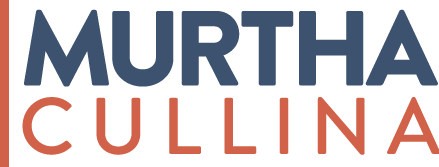March 29, 2020
By: Melanie N. Aska, , and
Today, the House of Representatives passed by voice vote and the President signed into law the Coronavirus Aid, Relief, and Economic Security Act (the CARES Act, [H.R. 748]) a $2 trillion relief package—the largest stimulus in modern history—to provide immediate help to individuals and businesses affected by the COVID-19 pandemic. The Senate approved the bill 96-0 on March 25, 2020.
The CARES Act is “Phase 3” in a series of recent federal laws intended to protect the country against the ravages of COVID-19. “Phase 1”,the Coronavirus Preparedness and Response Supplemental Appropriations Act, 2020 [H.R. 6074], enacted on March 6, 2020, provides funding to the Department of Health and Human Services, the State Department, and the Small Business Administration to respond to the COVID-19 outbreak. “Phase 2”, the Families First Coronavirus Response Act [H.R. 6201], enacted on March 18, 2020, provides paid sick leave, tax credits, free COVID-19 testing, expanded food assistance and unemployment benefits, and increased Medicaid funding.
The CARES Act permits, but does not require, certain retirement arrangements to allow COVID-19-affected individuals to tap into to their retirement funds, through loans and in-service “coronavirus-related distributions”. The CARES Act also waives required minimum distributions (RMDs) which otherwise would have had to have been paid from IRAs and employer-sponsored retirement plans during 2020, in an attempt to save people from having to further deplete retirement nesteggs that may already have been ravaged by recent market downturns.
The key retirement plan and IRA-related provisions in the CARES Act include:
Coronavirus-Related Distributions
- “Eligible retirement plans” may make “coronavirus-related distributions” of up to $100,000 to eligible individuals that would be exempt from the 10% early distribution tax that generally applies to pre-age 59½ distributions.
- “Eligible retirement plans” are IRA accounts and annuities, 401(a) qualified retirement plans (including 401(k) and profit-sharing plans), 403(a) qualified annuity plans, 403(b) plans, and governmental 457(b) plans.
- Eligible retirement plans may, but are not required to, make coronavirus-related distributions, and if they do permit these distributions, they must be made by December 31, 2020.
- A coronavirus-related distribution may be made only to an individual who—
- Is diagnosed with the virus SARS-CoV-2 or with the coronavirus disease 2019 (COVID-19) by a test approved by the Centers for Disease Control and Prevention;
- Whose spouse or tax dependent is diagnosed with such virus or disease by such a test; or
- Who experiences adverse financial consequences as a result of being quarantined, being furloughed or laid off or having work hours reduced due to such virus or disease, being unable to work due to lack of child care due to such virus or disease, closing or reducing hours of a business owned or operated by the individual due to such virus or disease, or other factors as determined by the Secretary of the Treasury (or the Secretary’s delegate).
The administrator of an eligible retirement plan may rely on an employee’s certification that he or she meets the above conditions in determining whether to make a coronavirus-related distribution.
- An individual who receives a coronavirus-related distribution could choose to repay the distribution (in whole or in part) to an eligible retirement plan (either the distributing plan or any other eligible retirement plan) within three years after receiving the distribution, and the repayment would be treated as a tax-free rollover contribution to the recipient plan.
- A coronavirus-related distribution would not be treated as a rollover distribution and so would not be subject to automatic 20% federal income tax withholding and would not have to be accompanied by a written rollover notice. Instead, an individual receiving a coronavirus-related distribution could choose to include the distribution amount in income either in the year in which it is received or ratably over three years (i.e., the year of receipt and the following two years).
Plan Loan Relief
- The CARES Act temporarily increases, from $50,000 to $100,000, the maximum dollar amount that “qualified individuals” (the same individuals, described above, who may receive coronavirus-related distributions) may borrow from a “qualified employer plan”. The CARES Act also allows qualified individuals to borrow up to the lesser of $10,000 or 100% (rather than 50%) of their vested account balance.
- “Qualified employer plans” (that is, 401(a) qualified plans (including 401(k) and profit-sharing plans), 403(a) qualified annuity plans, 403(b) annuity plans and governmental plans) may, but are not required to, make this plan loan relief available to qualified individuals.
- This plan loan relief is only temporary and ends 180 days after the CARES Act’s enactment date.
- The CARES Act also provides a one-year extension of the plan loan repayment period for any loan repayment that becomes due between the date of enactment and December 31, 2020.
Required Minimum Distribution (RMD) Relief
- In an attempt to save people from having to further deplete retirement nesteggs that may already have been ravaged by recent market downturns., the CARES Act permits, but does not require, defined contribution plans (that is, 401(a) qualified plans (including 401(k) and profit-sharing plans), 403(a) qualified annuity plans, and 403(b) annuity plans) and IRAs to suspend RMDs in 2020 (including for participants who reached age 70½ in 2019 and have not yet received their 2019 RMDs). Notably, any amounts distributed in 2020 that would otherwise have been RMDs will not be treated as eligible rollover distributions, and thus will not have to be accompanied by a written rollover notice.
Adoption of Plan or Contract Amendments
- Plan sponsors and IRA trustees or custodians that choose to provide any or all of the above-described relief must make any necessary plan and contract amendments by the last day of the first plan year beginning on or after January 1, 2022 (January 1, 2024 for governmental plans).
Single Employer Pension Plan Funding Relief
- The CARES Act allows plan sponsors of single employer pension plans to delay required minimum funding contributions (including quarterly contributions) until January 1, 2021. The amount of each delayed payment will be increased by interest at the plan’s effective interest rate for the year which includes the payment, accruing for the period between the original due date of the payment (i.e., the due date without regard to the CARES Act relief) and the actual payment date.
ESOP Eligibility for SBA Emergency Economic Injury Disaster Loan Relief
- The CARES Act expands the Small Business Association’s (SBA) Emergency Economic Injury Disaster Loan relief for the period January 1, 2020 through December 31, 2020 to include a number of new entities that are eligible to receive SBA emergency economic injury disaster loans – including employee stock ownership plans (ESOPs) with 500 or fewer employee participants. We anticipate publishing a separate Client Alert describing the key points of this SBA Disaster Relief.
Expansion of DOL Authority to Postpone Certain Filing Deadlines
- The CARES Act also amends the Employee Retirement Income Security Act (ERISA) to allow the Secretary of the Department of Labor to postpone certain ERISA mandated filing deadlines by up to one year in the event COVID-19 is declared a “public health emergency” by the Secretary of the Department of Health and Human Services, which occurred on January 31, 2020, retroactive to January 27, 2020.
If you have any questions about this bulletin, please contact Melanie N. Aska at maska@murthalaw.com or 617.457.4131, Erek M. Sharp at esharp@murthalaw.com at 203.772.7772, or Anthony R. Leone at aleone@murthalaw.com at 617.457.4117.
![]() employee_benefits_president_signs_massive_2_trillion_stimulus_package_permitting_retirement_plan_distributions_and_loan_relief_to_participants_affected_by_covid19_copy1.pdf
employee_benefits_president_signs_massive_2_trillion_stimulus_package_permitting_retirement_plan_distributions_and_loan_relief_to_participants_affected_by_covid19_copy1.pdf

